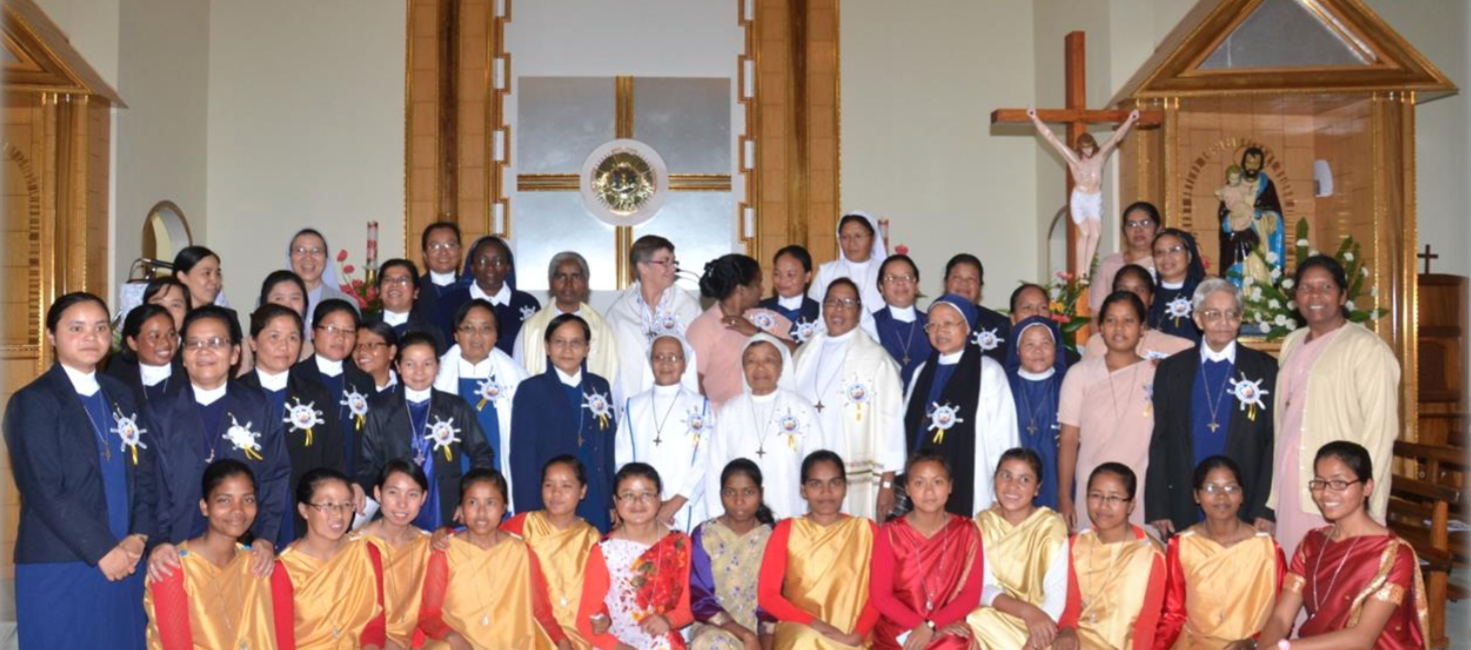
Write-up 0n the Centenary Celebration held on the 25th September, 2015 The German Sisters of the Divine Saviour (SDS) who had zealously ventured to work among the Khasis since 1890 received order that they leave the area positively by November 10th, 1915. This was a great blow for the thriving mission in the then Province of Assam. The non-German RNDMs from Chittagong were requested to reach out to the pressing need of looking after the School and Orphanage deprived of security and tender loving care. Responding to the SOS call of Reverend Father Lefelvre SJ, Reverend Mother Mary of the Eucharist, Mother Vicar personally travelled to Shillong taking with her valiant Missionaries: Mother M. St. Bertille, Sister M. St. Dionysius, Sister M. St. Ernestine and a young girl from Chittagong, Mary Bernard. That auspicious day was the on the 15th November 1915, twenty two years after Euphrasie herself brought five pioneers to Chittagong, East Bengal, in 1883.
While waiting for the approval of Very Reverend Mother, Mother Vicar also brought Mother Mary of Jesus Adolescent to stay on with the group until new direction come. German Sisters were denied re-entry. The only alternative was to extend the stay of the Sisters of Our Lady of the Missions Thus the land who soon identified themselves with the people and became the backbone of the new Body of the Church. By 1922, the Sisters were ready to host the Italian Salesian Fathers who had ever-since evangelized the entire North East across the eight States. Collaborating with the Salesian Fathers of Don Bosco (SDB), the flourishing work of the RNDMs received blessings after blessing. By 1928, the property, Mary Ville was purchased to be the permanent cradle of the Congregation known as St, and St. became more and more imperative. Therefore more property was added to accommodate the growing ministries. Persuasion coupled with vision knocked at the door of the Sisters to harken to yet another beckoning to begin IA (Intermediate Arts), BA & B.Ed. The sunshine of 1937 spiraled higher and higher making the College a sparkling platform of rare influence. The admirable performance of students brought many coveted laurels and transformed the face of the twin reputed premiere educational institutions – of Teacher Education (SMCTE)
Standing second to non society with sterling leaders and committed educationists. The imprint of the RNDM stamp has become a legacy that will outlive many successive generations. May God be praised for magnifying the humble handmaids. Prior to the invitation to launch into Shillong, Haflong was already a hill station selected by the Sisters from the plains as early as 1911. But it became established as an educational institution only in 1918. It was affiliated to the Cambridge University, England and carved its niche among the then world class institution. Inflamed with burning passion and lured by the verdant hills and fertile plains s has come of age the RNDM missionaries established more schools and convents. Cherrapunjee in 1937, St. , Queen of the Missions in 1946. After India got its Independence in 1947, disturbed by the political hustles, RNDM institutions were also affected. East Bengal became East Pakistan. The long cherished common novitiate in nostalgic Chittagong, on account of the infinite problems of getting passports and visas for candidates gradually made the Sisters to let go and surrender to providence. Added salt to injury, the Chinese aggression in 1962 moved the RNDMs southward till they harboured in Bangalore, Karnataka in 1964. A host of multi-facilities that Bangalore offers, touched the visionaries to bring the Indian novitiate to Bangalore at the earliest, in the meantime, the temporary Indian Novitiate started in St. Jo Shillong in 1964. It was Sister Mary Peter Duffy who was selected to accept the first batch of novices to the sacred ground.
By 1972, the novitiate was brought to Mariam Nilaya, Banaswadi and Sister Mary Paul, now Veronica Kavanagh, the second Novice Mistress paved the way for six other Novice Directress who successively form the new members of the Congregation. In its fortieth year life-giving service, the Indian Novitiate has the distinction of giving a Congregational Leader in the person of Mary Bernardine Mulaveetil and a two Congregational Bursars, two members of the CLT and a Secretary General. The jurisdiction of the parent or so to say the arch-province of Chittagong was clustered around East Pakistan, West Bengal, Burma & Assam. Challenged by political demarcations which overnight became international boundaries the RNDM Province was triplicate into three Regions in 1968. East Pakistan, Burma and India with Mother M. Desmond O Hara, M. Declan Harrington and M. Philomene Mahon Regional Superiors respectively. The Regions were raised to the stature of the Province in 1972. Coordinating the complicated unwieldy climatic and cultural differences stretching from Assam to Bengal & Karnataka of the vast nation was a Herculean task for the Provincial and her Team. In spite of the dogmatic pressure to retain unity in diversity, in 1996 the discernment under the leadership of Louise Dunphy (CLT) to triplicate the Indian Province first into vice provinces, India North East (INNE), India Central (INC) & India South INS. brought expansion. By 2000, a silver lining for growth flashed across their skies. Three Vice Province were ranked as Provinces where each province progressively expanded its presence.